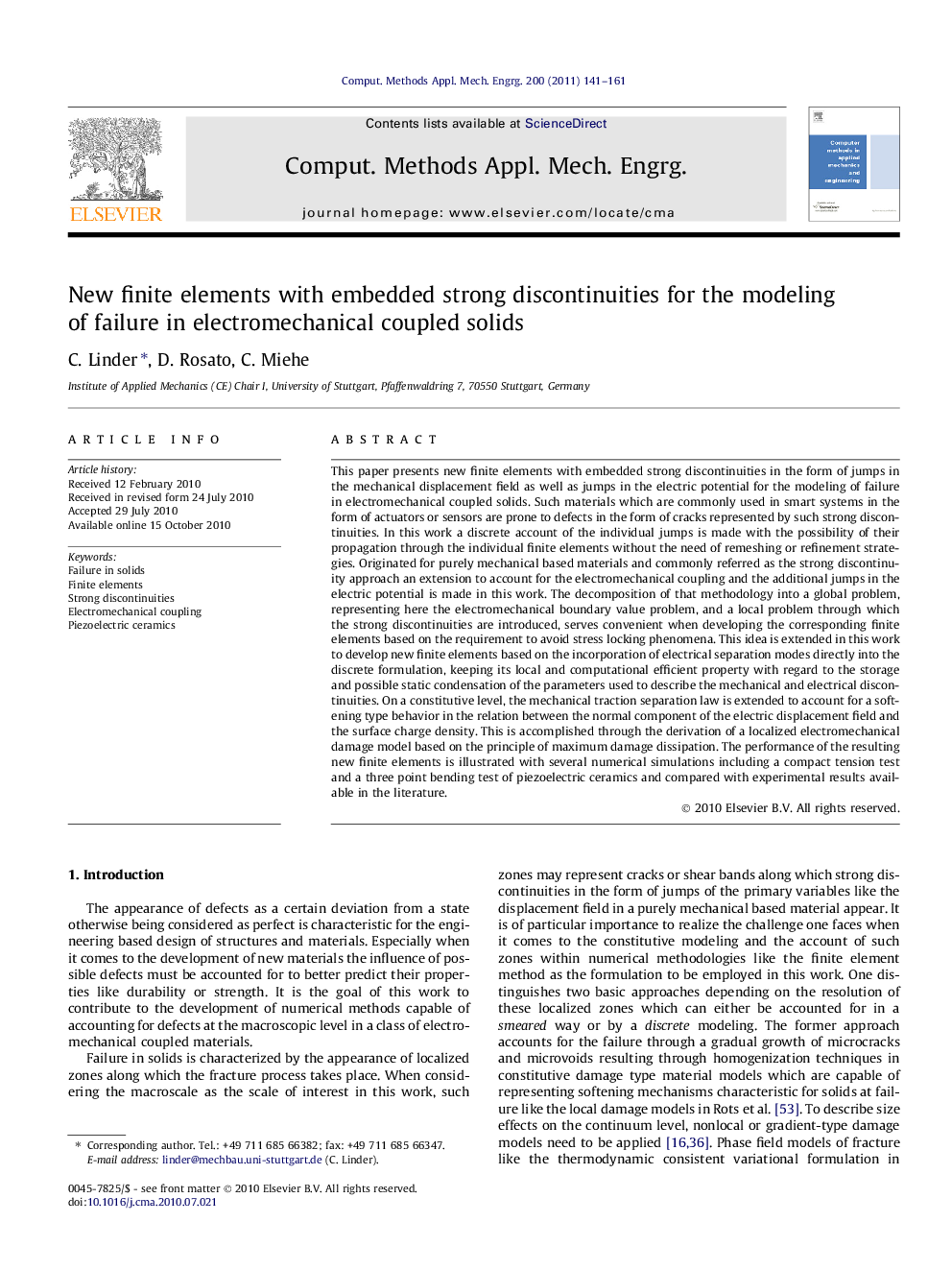| Article ID | Journal | Published Year | Pages | File Type |
|---|---|---|---|---|
| 498786 | Computer Methods in Applied Mechanics and Engineering | 2011 | 21 Pages |
This paper presents new finite elements with embedded strong discontinuities in the form of jumps in the mechanical displacement field as well as jumps in the electric potential for the modeling of failure in electromechanical coupled solids. Such materials which are commonly used in smart systems in the form of actuators or sensors are prone to defects in the form of cracks represented by such strong discontinuities. In this work a discrete account of the individual jumps is made with the possibility of their propagation through the individual finite elements without the need of remeshing or refinement strategies. Originated for purely mechanical based materials and commonly referred as the strong discontinuity approach an extension to account for the electromechanical coupling and the additional jumps in the electric potential is made in this work. The decomposition of that methodology into a global problem, representing here the electromechanical boundary value problem, and a local problem through which the strong discontinuities are introduced, serves convenient when developing the corresponding finite elements based on the requirement to avoid stress locking phenomena. This idea is extended in this work to develop new finite elements based on the incorporation of electrical separation modes directly into the discrete formulation, keeping its local and computational efficient property with regard to the storage and possible static condensation of the parameters used to describe the mechanical and electrical discontinuities. On a constitutive level, the mechanical traction separation law is extended to account for a softening type behavior in the relation between the normal component of the electric displacement field and the surface charge density. This is accomplished through the derivation of a localized electromechanical damage model based on the principle of maximum damage dissipation. The performance of the resulting new finite elements is illustrated with several numerical simulations including a compact tension test and a three point bending test of piezoelectric ceramics and compared with experimental results available in the literature.
